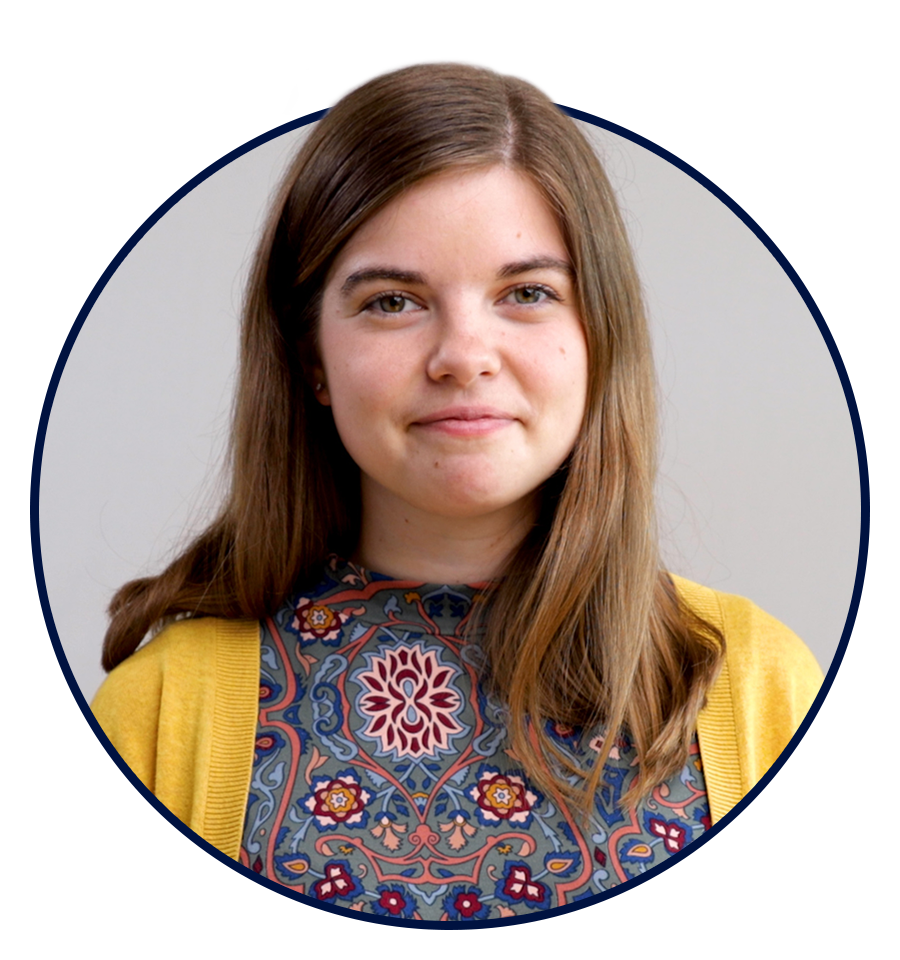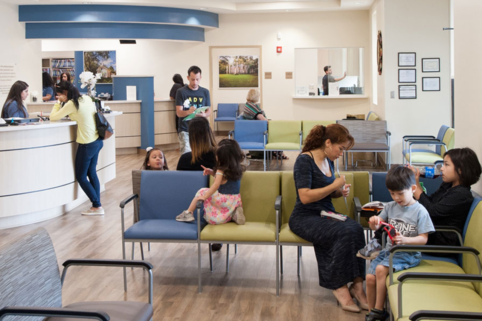Low-Cost Health Care with Dignity
 AVERY WEST
AVERY WEST
Member Engagement Director
Read more from Avery
When Good Samaritan Health Centers of Gwinnett went bankrupt in 2005, they knew they’d have to make some changes to their free clinic model.
Dr. Greg Lang, Executive Director, explains, “As a healthcare center, we have to use highly-educated, licensed providers. We can’t rely on volunteers, like many other nonprofits are able to do. Charging for services became a financial necessity.”
What began as a pragmatic decision soon became a philosophical one. “We started to believe that what we were doing was not just good business sense, but that it had Biblical underpinnings. The first book that we came across that helped us clarify our thinking was When Helping Hurts.”
Today, Dr. Lang and his team at “Good Sam,” as the center is affectionately called, know that asking customers to pay a small rate for services is the best way to affirm dignity, maintain quality, and spread the gospel.
Pricing
“If we are the church, our doors need to be as wide open as possible,” Dr. Lang shares, “So we got rid of all the criteria, except for one: you have to be uninsured.” Unlike other clinics who have income, residency, citizenship, or wait time requirements, Good Sam provides care to any uninsured person. They use a unique model with clear cost structures, wellness incentives, opportunities for pastoral care, and of course, radical generosity when necessary.
The staff explain to customers that there’s a real value here that they get to help fund. “Sometimes they get it immediately, Dr. Greg says, “and sometimes they’ll leave and come back 6 weeks later saying, “I earn too much money, or I live in the wrong county, or they won’t see me for 6 weeks at all the other places.””
The center charges flat rates, which are about 25% of the market price, for each type of medical or dental visit. The first appointment is always the most expensive at $110, but if the patient is cooperative with their plan of care (quitting smoking, taking medicines, correctly, etc.), their fees will go down, and subsequent appointments range from $40-$85. This “incentive to wellness” plan speaks to the reality that Good Sam is interested in treating the whole person—body, mind, and spirit—not just the medical condition at hand.
Customers pay their fee at the beginning of the visit, and then the staff at Good Sam does everything they can during their appointment, even if certain procedures weren’t factored into the original cost. Every patient knows exactly what they’ll pay going in to the appointment.
“All of our front line staff are empowered to exercise generosity when necessary,” Dr. Lang explains. Employees can discount or waive it if they perceive a real reason and need. They always encourage patients to pay even a small amount, if they can, per the Good Samaritan Fund guidelines.
Good Sam, though, doesn’t pretend that the cost simply goes away. They make clear to their patients that nothing is free. Staff are taught to offer a card, saying, “A donor has given money that we are going to use to pay your fee. We would like for you to take this postcard and write a thank you note so that we can send it to the donor. We don’t just make the fee disappear. An advocate is going to come in and pay your debt.”
Funding
Of course, not every charitable healthcare center operates with this model. Free health clinics do exist, and most of them are only able to keep up with medical regulations and staff salaries by receiving government funding. For Dr. Lang, that was never an option. “We don’t accept any money that would tell us to shut our mouth about our religious foundations,” he shares.
Their loyalty to their convictions has not only allowed Good Sam to continue spreading the gospel, but also to provide more services to more people. Since asking customers to contribute to their care, Dr. Lang explains, “We’ve just exploded. We went from being open two days a week with four staff, to five and a half days a week, 56 employees, and two buildings.” Unlike many other nonprofits who have grown over time, it wasn’t the donors, but the customers, who made that change possible.
Good Sam funds more than 50% of their operational costs with patient fees. Because of these changes, Good Sam doesn’t feel like a free clinic in a basement or a commercial office park. They are able to give their customers a dignified experience with beautiful rooms and brand new equipment. “When people walk in,” Dr. Greg says, “they say, “I get to go to a place like this?””
Pastoral Care
The health center employs 56 people, including physicians,, dentists, nurse practitioners, phlebotomists , pharmacy-techs, and a pastoral care associate. They also welcome volunteers and interns from partner universities, tech schools, and medical schools. Dr. Lang sees these partnerships as an opportunity to influence the larger medical field. “We are demonstrating to them that it’s not just caring about the body or the mind, but there’s also a spiritual component. We are treating the whole person.”
Good Sam has a full-time staff member with a degree in pastoral care. As long as patients don’t need medication, they can have a one-hour appointment with the pastoral care clinician for just $20. They provide traditional marriage and family, parent/child, and grief counseling, but also pray with patients who are have had a miscarriage, received a bad diagnosis, or are just overwhelmed.
Customers from every faith are welcome at Good Sam, and if they would prefer not to pray or talk about God, the staff respects their wishes. “We’ll just pray for them later!” Dr. Lang says.
Sharing the Vision
In order to maintain this holistic vision of helping, the Good Sam staff begins every morning with a 15 minute staff devotion. They pray together and talk about why they do things this particular way.
Additionally, new employees are assigned a mentor, a staff member who has been around for a while. The conversations between mentors and mentees helps maintain the culture of the organization.
Unity is key. For those interested in making a similar change to their ministry, Dr. Lang emphasizes that every board member must be supportive of the empowering model. Otherwise, there will be conflict every step of the way.
Care Coordination
Good Sam knows they can’t meet every need for every customer. They have a full time employee that maintains cordial relationships with hospitals, surgery centers, private practices, and the public health department. The Good Sam staff doesn’t just make a referral— they make the introduction, help the customer fill out the paperwork, help them navigate financial need processes, and do a follow up appointment.
“The Good Samaritan didn’t just point to a hotel down the street. He went all the way. We want to do the same thing,” Dr. Lang explains.
Consultation
“We know we can’t multiply everywhere. Other people need to be in this space. If we can make that path any shorter for them, we want to help,” Dr. Lang says. The Good Samaritan staff generously share their expertise and experience with anyone who is interested in learning more.
“We will give you everything we have except for the names and addresses of our donors,” Dr. Lang jokes. The Good Sam staff will give tours, documents, and personal consultation to other organizations who are interested in the model. They have seen great impact in the Atlanta area, and with the model spreading, they hope to see more around the country.
Conclusion
A couple of years after making the switch to welcoming customers into ownership, Dr. Lang remembers, a conversation with one of his employees confirmed that this was undoubtedly the right decision.
Dr. Lang had given a raise to one of his staff members—a single mom with four children who received no child support. He was surprised when she came into his office, asking him to take it back. With the extra money, she no longer qualified for food stamps.
“When that happened,” Dr. Lang says, “I realized, we do not want to oppress our patients. We do not want to have a policy that requires people to minimize their earning capacity. We want them to earn as much as they can so they can feed and clothe their children.”
Good Sam does just the opposite. They help unleash the capacity of people in need, and empower them with the confidence, knowledge, and love of Christ that they need to flourish.




Leave a Reply
Want to join the discussion?Feel free to contribute!